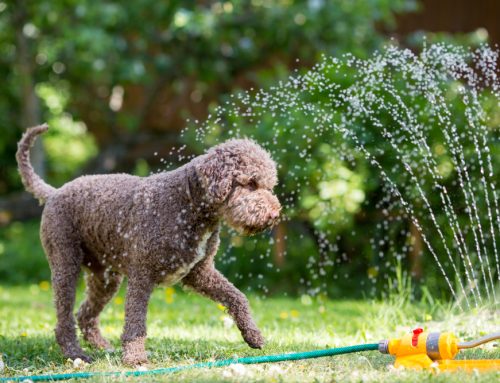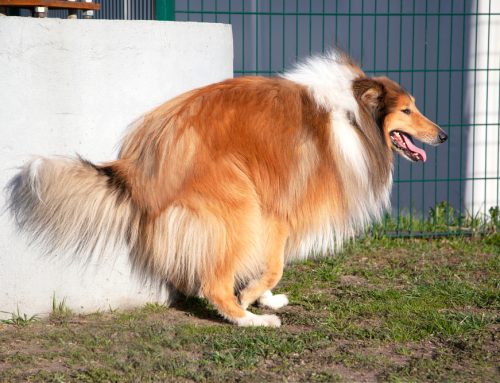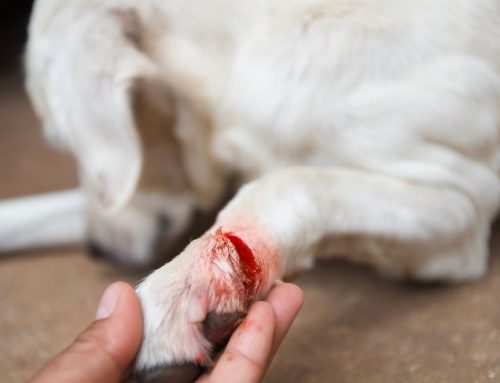When you’re at home with your pet, the last thing you think about is putting them in harm’s way. Unfortunately, because many household items are toxic to pets, your dog or cat may be having close encounters with poisonous products every day.
To eliminate these potentially harmful or deadly exposures, here’s an easy-to-follow guide from Countryside Veterinary Hospital on identifying four household pet toxins and better protecting your pet.
Chocolate toxicity and pets
Chocolate is widely recognized as a pet safety hazard, yet always ranks high on the annual list of top pet toxins. While cats commonly show polite restraint and are less likely to experience chocolate toxicity, dogs will gladly consume any of its widely available forms.
- Which chocolates are toxic to pets? — Dark and bitter chocolates are the most dangerous, including baking chocolate, cocoa powder, or unsweetened chocolate chips, bars, or bark. Dogs must consume milk chocolate in large quantities to experience toxicity—around one ounce per pound of body weight—and white chocolate is considered relatively harmless.
- How does chocolate harm pets? — Chocolate contains caffeine and theobromine, two dangerous chemical compounds (i.e., methylxanthines) that act as stimulants in dogs, causing their cardiovascular and nervous systems to overreact. Darker and bitter chocolate contains higher levels of methylxanthines, meaning only a small amount can cause dangerous physical effects.
- What are chocolate toxicity signs in pets? — Common signs include vomiting, diarrhea, agitation or nervousness, high heart rate, panting, pacing, tremors, or seizures.
- Where would my pet be exposed to chocolate? — Pets most often encounter chocolate when their owners are baking, by counter surfing, or getting into the trash. Pets may also find chocolate candy in purses, lunch boxes, and backpacks. Dogs who eat the plastic or foil wrappers may experience intestinal obstructions that require surgical removal.
For a complete list of unsafe foods for pets, check out this list from the ASPCA.
Medication toxicity and pets
Taking medications or supplements are everyday rituals for many pet owners. Unfortunately, pets see these pill bottles and colorful capsules and tablets as toys or treats, and may ingest one or many doses.
- What medications are harmful to pets? — All medications—including prescription veterinary medications—are potentially hazardous for dogs and cats. The most common include antidepressants, ADHD medications, heart medication, pain relievers (e.g., ibuprofen, naproxen, acetaminophen), and cold medicines.
- How do medications harm pets? — While pets can safely take some human drugs, their dosages are much smaller. As little as one human prescription pill or over-the-counter product can result in a massive overdose for a pet. Veterinary prescriptions—especially chewable medications—may cause an overdose if the pet has access to the entire bottle or package.
- What are toxicity signs in pets? — Signs can vary based on the medication consumed, but may include vomiting, diarrhea, lethargy, increased thirst or urination, loss of coordination, weakness, tremors, seizures, high heart or respiratory rate, unconsciousness, and death.
- Where would my pet access medication? — Pets commonly find medications on countertops and nightstands, inside purses, backpacks, or work bags, and stored in jacket pockets or discarded laundry.
Because overdoses can be lethal for pets, never give your pet a medication or supplement without your veterinarian’s instructions. Keep all medications out of reach and stored in their original containers.
Xylitol toxicity in dogs
Xylitol is a natural sweetener and sugar substitute that triggers dangerous—potentially fatal—reactions in dogs. Cats seem to be unaffected by xylitol poisoning.
- What products contain xylitol? — Xylitol is found in sugar-free gum, candy, and mints, as well as chewable vitamins, toothpaste, mouth wash, and snack foods, including peanut butter, pudding, and some energy bars.
- How does xylitol harm dogs? — Xylitol causes a rapid and life-threatening drop in blood sugar, and may cause liver failure.
- What are the toxicity signs in dogs? — Dogs experience a rapid hypoglycemic response, including vomiting, weakness, lethargy, and seizures, in 15 minutes. Liver damage is not immediately apparent.
- Where would my dog find xylitol-containing products? — Owners may unknowingly feed their pet xylitol-containing foods, or curious pets may find xylitol products in coat pockets, car consoles, purses, lunch boxes, and on countertops.
If your pet ingests a product containing xylitol or any other known toxin, immediately contact Countryside Veterinary Hospital or the ASPCA Animal Poison Control Center.
Plant toxicity in pets

Indoor and outdoor plants add life and warmth to a home, but many contain harmful properties that make pets sick and can cause life-threatening organ damage.
- What plants are toxic to pets? — Dangerous plants include lilies, azalea, cyclamen, daffodil, dieffenbachia, oleander, sago palm, hyacinth, tulips, and chrysanthemums.
- How do plants harm pets? — Depending on the plant, pets may react after consuming the leaves, sap, petals, or stems. Plant toxins can cause various reactions, from mild gastrointestinal distress, to acute kidney failure.
- What are plant toxicity signs in pets? — Common early signs may include drooling, vomiting, lethargy, inappetence, and increased thirst and urination.
- Where would my pet find toxic plants? — Potted plants, floral arrangements, gardens, and flower beds are popular access points for curious pets.
For your pet’s safety, keep toxic plants out of reach. To determine if your plants are pet-safe, use this searchable poisonous plant list.
Poison prevention for pets
Protecting your pet from everyday hazards begins with awareness. Being able to identify the common items that can potentially harm your pet allows you to take appropriate precautions, recognize toxicity signs, and respond appropriately should an accidental ingestion occur.
If you know or suspect your pet has consumed something toxic, don’t wait for visible illness signs—immediately call Countryside Veterinary Hospital. For after-hours care, call Animal Emergency and Critical Care, or the ASPCA Animal Poison Control Center.








Leave A Comment